Climbing. As a cyclist, you’ll either love it or hate it. Maybe even both! Regardless of how you feel, epic rides with plenty of elevation have always been regarded as an accomplishment and sometimes even with recognition as well, from watching the Tour de France race up the Alpe de Huez, to attempts at Everesting, or even making it into the ranks of the High Rouleur’s Society.
When you hear about a ride called a Super Randonnée, epic climbing isn’t the first thing to come in mind. After all, anything associated with the audax and randonneuring world is more likely to involve epic distances. However, make no mistake, a Super Randonnée takes both climbing and distance, throws them into a blender and dumps the resulting sludge right on top of any cyclist brave enough to take up the challenge.
A Super Randonnée is 600km ride that involves a minimum of 10,000m of elevation gain. That’s a little more than your average Everesting attempt, with a whole lot more distance tacked on. However, unlike a standard BRM600 ride, the time limit for this event is 60 hours. In addition, there is a separate category that you can opt for if you’re not up to doing that amount of distance in 60 hours. Instead, you can take up the “tourist” category which stipulates a minimum of 75km per day. That comes up to a time limit of around 6 days.
Pre-ride Preparation
When this ride was announced in late 2019, along with the rest of the 2020 Randonneuring season, one of the first things I decided to do was to prep my bike for plenty of climbing. At the time, I was running a full 53/39T crankset with an 11-32T cassette, which had plenty of top end speed while preserving some good climbing capability as well. It was an aero bike tuned for speed, after all, and I still like it this way, so I wanted to be able to improve its climbing capabilities without sacrificing speed by too much.
The thought of an 11-40T cassette briefly crossed my mind, but with it comes additional headaches. Spacing between each gear, for one; the need for an additional component, a “Wolf Tooth” derailleur hangar, to handle the extra-large cassette. For a regular club or recreational cyclist I suppose the latter isn’t really much of an issue at all, but for an ultra-long distance cyclist, one must also consider ease of maintenance and handling repairs in the middle of a ride. Minimizing the number of exotic components on the bike is always more desirable, and so I opted to keep my bike’s rear end but modify the front instead.
I went with a smaller sub-compact 48/32T chainring. This gave me a nice 1:1 gear ratio for handling plenty of climbing, while a top gear of 48-11T isn’t too big of a compromise. It still tops out at around 60km/h at 110rpm for decent downhill speed. Beyond that kind of speed, I’d benefit more from going into a full aero tuck and letting gravity and aerodynamics do the job.
Another recent addition to the bike is the use of aero bars. Since PBP in 2019, I’ve started using aero bars as they provide dual benefits to long distance riding – an additional position to alleviate stress from the hands and sit bones, as well as the added benefit of aerodynamics. I used the ControlTech Aero Cockpit Plus for a decent amount of time. This model is a very short, ITU-compliant bar that is more focused on aerodynamics and speed than on comfort. This is fine for my needs, but it does require good core strength to use for long periods of time without suffering from neck and shoulder issues. Unfortunately, one of the carbon arm rests cracked when I hit a pothole during a ride shortly before the start of the Super Randonnée, so I hastily looked for a replacement and ended up with a Profile Design Sonic 35a. These are also relatively aerodynamic, but also more comfortable with wider and taller arm rests. I have yet to ascertain how much I lose in speed with these, but at least I gain a bit more comfort in return.
“The key to finishing an audax ride well is to minimize stopped time. The more you are on the bike, the more likely you are to finish”
Besides the bike, I have been experimenting with on-bike liquid nutrition. As I have mentioned in previous videos before, the key to finishing an audax ride well is to minimize stopped time. The more you are on the bike, the more likely you are to finish. This means fewer lengthy stops for meals whenever possible. I’ve experimented with things like milk (Ensure Gold), but that didn’t work out well because you need to carry large portions of it just to refill a 710ml bottle. I finally settled with Hammer Nutrition’s Perpetuem. One pack is relatively expensive (RM19.90 retail price), but it does feel effective in reducing the amount of food stops I have to make. During the BRM200 Pink Ride 3.0 in January 2020, for example, I did not stop for food at all except for some bananas at CP2, Morib Beach. They were free, after all!
Planning for an Epic Ride
When the draft route was first published, it didn’t really seem as epic as it looked, but that’s just because I’ve ridden parts of the route before. Simpang Pulai to Cameron Highlands to Gua Musang was done in both 2018 and 2019 editions of the BRM600 Big Hills Challenge. Gua Musang to Kenyir Lake, on the other hand, was done during BRM400 in July 2018.
Based on those previous rides, I estimated 9.5 hours from Simpang Pulai to Gua Musang, and 7.5 hours from Gua Musang to Kenyir Lake, inclusive of stops and rests. That makes 17 hours one-way, or 34 hours for a complete ride with plenty of surplus for rest and sleep. Sounds very doable, no? Well, those estimates turned out to be completely off for various reasons that I’ll cover later.
“The Garmin Edge 1030 remains my trusty and reliable head unit for recording the ride as well as providing turn-by-turn navigation”
Anyway, based on those preliminary estimates I decided to pack my things as if it were a standard BRM600. My usual loadout would involve easy-to-access materials in a Topeak Large Fuel Tank top tube bag, as well as clothing and supplies in a 6l Topeak Backloader saddle bag. I rarely ride with a frame bag due to the small size of my bike, and I don’t use a handlebar bag because it gets in the way of my lights and other gadgets.
The Garmin Edge 1030 remains my trusty and reliable head unit for recording the ride as well as providing turn-by-turn navigation. It has been good for up to 20 hours of continuous usage, so for additional power I brought along a 10,000mAh Energizer power bank. Unless it rains, I can easily run a USB cable from the power bank inside the top tube bag to the Garmin and keep it charged; it is also very handy at night where the continuous charging also keeps the backlight on, allowing me to see the screen at night (typically the Garmin turns off backlight to conserve power, but that makes it unreadable in the dark).

For front lights, my trusty Cateye Volt 1700 is my main light. Its top end power of 1700 lumens sounds like overkill, but in reality what’s important is the low power performance. At the lowest continuous setting, this light can output 200 lumens for up to 15 hours. 200 lumens is good enough for most dark stretches of road; you only need to bump it up to medium power if you are on roads with competing bright lights, such as if there are plenty of headlights from moderate to heavy traffic. As a backup, I have the Cateye Volt 800 which is also very bright with 200 lumens at continuous low power, and small enough to fit into the top tube bag. As you can see, my emphasis on front lights is good brightness at the lowest setting, which also translates to longer runtimes.
I carry plenty of rear lights for safety reasons. My main light is a Cateye Reflex Auto, and that is primarily because it takes AAA batteries and can run for a humongous 30 hours in continuous mode. Obviously, I run this in continuous mode, in addition to a second blinker. I also pack a spare set of AAA Eneloop batteries as backup and, if for whatever reason these are not sufficient, AAA batteries are easily available in convenience stores and petrol stations all over the country.
For the blinkers I have pair of Cateye RAPID Mini lights, and a Wearable X. The Wearable X isn’t really a conscious decision – it’s my designated backup that’s always with me regardless of what kind of ride I’m doing, and it has a very stubborn clip mechanism which is very hard to remove once you have attached it to your pocket, bag or bike, making it a particularly good backup that doesn’t fall off on its own. The Rapid Minis do 30 hours in flashing mode, which is plenty.
“You most certainly do not want to be riding with wet gloves, socks or shorts for prolonged periods”
I typically carry a complete set of spare clothes – merino wool inner layer, jersey, bibshorts, gloves and socks – for BRM600 rides. Even if I do not plan for any overnights, a spare set is useful for riding in wet weather. You most certainly do not want to be riding with wet gloves, socks or shorts for prolonged periods, so it’s good to be able to change clothes once it stops raining. Continually riding with wet socks will give you sore feet whereas wet shorts will amplify saddle issues quickly. Spare shirts or jerseys aren’t as important if you do not plan for overnight stops and can be left out if weight or space is a concern.
I do not run tubeless tyres for my own personal reasons. Other people may feel strongly for the benefits of tubeless, but that is their own personal choice. Make your own decisions based on your own feelings about the technology.
Since I run tubes, I carry three spare inner tubes along with a repair patch kit in case three isn’t enough. For BRM600 and above, I’ll also carry a spare tyre – in this case, a Panaracer Race EVO3. It’s lighter than my regular Panaracer GravelKings, but I really don’t expect to use it except during emergencies, so it makes sense to just bring a lighter tyre as spare.
“You never want to be in a situation where a bad pump ends your ride and leaves you stranded in the middle of nowhere”
One more unique thing about my gear setup: I carry two pumps. My main pump is the Topeak Hybrid Rocket HP. It’s really handy as it also doubles as a CO2 cartridge pump. While the popular opinion is that CO2 is not as useful during an ultra-long distance ride, but if you are caught out with a flat in the dark, or if you are already rushing to meet a checkpoint cut-off time, the option to quickly get your business done and continue riding is a good thing to have. My spare pump, a Topeak Race Rocket HP, serves as a backup in case the main pump malfunctions – you never want to be in a situation where a bad pump ends your ride and leaves you stranded in the middle of nowhere.
Day 1
“Starting early also has the benefit of getting more riding in before the sun comes up, which is always a good thing especially under Malaysian weather”
The ride officially started from McDonald’s, Simpang Pulai on the Friday of February 14, 2020. Audax Randonneurs Malaysia was somewhat flexible with the starting times; if you started at 6:00am, the cut-off time would have been 6:00pm on Sunday. If you started at 7:00am, then the cut-off would be 7:00pm, and so on. Based on earlier estimates, I had aimed to be faster than a standard BRM600 time of 40 hours and left just a few minutes after 6:00am. Starting early also has the benefit of getting more riding in before the sun comes up, which is always a good thing especially under Malaysian weather.
It was 5km from the starting point to the junction leading towards Cameron Highlands. This short stretch is flat and is probably the longest flat road we’d see during the ride. You could consider it as a warm-up or lead-in of sorts before the actual ride begins.
“The descents are more detrimental to the overall effort since they make the remaining climbs steeper”
From the junction, it would be approximately 55km up to my first planned stop at BHPetrol, Blue Valley atop Cameron Highlands. It’s not easy to pinpoint exactly when the climb up Cameron Highlands starts; after the junction, there’s a bit of gradual rolling for around 5-10km and then before you know it, the road starts going up continuously. A few short descents provide a bit of relief in the middle of the climb, but there’s not much of these and in practice, the descents are more detrimental to the overall effort since they make the remaining climbs steeper than what the average grade suggests. Indeed, a quick look at the Cameron Highlands Climb segment on Strava, it is a 42km segment with “only” 3% average grade; in reality, there are plenty of 5-8% slopes along the way, and sometimes even more.
Since this is a multi-day endurance ride my primary ride strategy is a controlled pace at mostly Zone 2 power, which is between 55-65% of FTP. If you don’t use power, a good estimate is to ride between 70-75% of your maximum heart rate. I made it to the top with only one stop in between – at the lookout point opposite Kampung Banjaran – and only for a quick video of the tourist stop and nothing more. I reached the BHPetrol in approximately 4 hours, which is on par with my previous performance, but spent 39 minutes there on a cup of instant noodles, refills, toilet break and so on. That’s about nine minutes slower than my past ride, which may not sound like much at first, but small things like this add up quickly especially during long, multi-day rides.
The descent down Cameron Highlands is probably the most enjoyable part of the ride. If you are a good descender, you can hit speeds in excess of 70-80km/h downhill but since I am an ultralightweight, and I also spent some time taking videos on the way down, my speeds topped somewhere around 60-65km/h. I could probably have hit 70+ km/h in a full Chris Froome aero tuck but eh, taking videos trumps speed! You do have to be careful of bad road conditions here; they’re not really a problem if you have the skill and experience bombing down hills at high speeds, but if you aren’t confident then it would be much safer to control your speed and be careful with the descent.
Again, the trip down isn’t entirely a descent; there are a few short climbs scattered along the way, and then before you know it, you are on the steep rolling hills section of the road heading towards Gua Musang. The weather was very pleasant at first – cool temperatures and plenty of cloud cover – but as I rode closer towards Gua Musang, the hotter it got. I don’t exactly recall when it the skies cleared up and it became blazing hot, but heat is one of the biggest factors that hit my ability to perform hard.
“I often try to do my rides solo as to avoid causing and/or feeling unnecessary pressure”
Along the way I met and teamed up with Chan Yow Nang and Maggie Goh and we rode the remainder of the route together. Our pace was relatively close enough to allow group riding; otherwise in the case of many audax rides, it is often very difficult to stick as a group as each separate individual will have different pacing and stopping plans. It especially gets out of sync quickly in multi-day rides when sleep schedules may differ among individuals; this is the reason I often try to do my rides solo as to avoid causing and/or feeling unnecessary pressure. For this ride though, I was planning to tackle Lake Kenyir in the middle of the night, so having a group was beneficial enough to outweigh the cons.
Approximately 20km before the T-junction to Gua Musang is a small restaurant which I had frequented the last two times I rode this route. The difference this time is that it was a Friday, and the shop was closed when we arrived. Some of us were desperate enough for water and rest, and Maggie managed to find the owner who was kind enough to open shop and let us have some iced soft drinks and refill our water bottles. If I were on my own, I would probably have continued onwards, but at a slower pace to conserve energy, knowing full well that there would be another restaurant 20km away.
The journey became a little bit easier after this, and not just because we had a brief rest and had our fill of cold drinks. The rolling roads were also a little more palatable at this point, along with wider and smoother roads as well. We made relatively good progress to the T-junction 20km away, rode past the corner restaurant, then promptly made a U-turn to the restaurant after Maggie called for a stop.
This time it was a pretty long stop, about an hour’s time, as we took shelter from the heat while also enjoying fresh, cool coconut juice and a simple instant noodle meal. In my previous BRM600 I skipped this stop as the weather wasn’t all that bad back then. This would explain why I managed a 9.5-hour time to Gua Musang during that ride, but not this time around.
“The key to finishing an audax fast is by minimizing stopped time, although sometimes some sort of compromise has to be made especially under adverse weather conditions”
We started moving again sometime after 4pm – it was still very hot but at the same time, we could not afford to lose too much time by dawdling about. I’ve said many times before that the key to finishing an audax fast is by minimizing stopped time, although sometimes some sort of compromise has to be made especially under adverse weather conditions. The short 20km to the Gua Musang town centre itself was relatively easy though; there were still some climbs, but also more flat sections to keep the legs spinning light and fast to get a bit of speed in.
KFC Gua Musang, at approximately the 160km mark, is our second checkpoint. We arrived after a total of 11 hours – 1.5 hours slower than my projected estimate. Stopping at the restaurant earlier accounted for almost one hour from that time, so I was about 30 minutes slower than the estimate. I suspect the earlier stops also ate into this time.
The original plan was to make a quick stop-and-go to the next refuelling stop at a petrol station around 40km away, but one thing led to another and we ended up with what amounts to a dinner snack before leaving. At this point I wasn’t confident about downing solid foods after all that heat exposure, so I played safe with only mashed potato and a large Pepsi. Better be on the side of caution than to risk potential stomach problems or related issues, especially on long rides such as this one.
From here on, it was about 140km to the halfway and U-turn point at Kenyir Lake. The first 40km was on a main road that would be described as a false flat, but with fast-moving traffic. After that, a right turn goes into remote kampung roads for about 30km before one last stop at a small restaurant, Kedai Makan Kat Tie, by the corner of a T-junction for refills and drinks.
“With very little traffic at night, we had the entire road to ourselves”
Another group had arrived at the restaurant before us, so we decided to ride the next 70km together as it was already dark and there were no lights all the way to the turnaround point of the route. The entire section of this route was still very hilly, but a bit easier than the stretch between Cameron Highlands and Gua Musang; the slopes were gentler, albeit in very poor condition with potholes everywhere. With very little traffic at night, we had the entire road to ourselves, but we still had to descend carefully and navigate around constant road hazards.
Somewhere along the way we lost Chan for a bit. I circled back to find him fixing a puncture from hitting a pothole during a descent. Afterwards there was a bit of a confusion with the rest of the group, who rode directly to their hotel, Lawit Lodge, just before the route’s turnaround point. Chan also had a room booked at the hotel, but rather than turn into it, we continued along the route and reached the turnaround point near the Lake Kenyir Resort & Spa, then wondered if everyone else had missed the junction or had gotten lost elsewhere. Regardless, we took a selfie in front of the guard house for checkpoint purposes, then backtracked to the hotel and found the group already in the process of checking in and settling into the hotel.
Lawit Lodge is a relatively cheap budget hotel. Most of the rooms were RM60 each for twin single bed accommodation. I did not book a room in advance as I had originally planned on turning around and heading back to Gua Musang, but since everyone was stopping here, I decided to go along with the plan and managed to score a slightly cheaper room at RM50, but without air-conditioning. It wasn’t necessary anyway. The most important thing was sleep; the second most important thing was a shower. Unfortunately, there was no heating, so I had to make do with a cold shower and no soap. I later found out that I could ask for soap at the front desk, but at that point I was too tired to bother. Sleep takes priority above all else.
Day 2
The hotel stay was not part of my original plan, so I had to make up a new one based on current conditions. Leave the hotel at 7:00am, reach Gua Musang somewhere in the late afternoon, then proceed to Cameron Highlands and climb in the dark, and reach Simpang Pulai early in the morning of the following day, was my new plan. That left us with just a little over 3 hours to sleep, not including the time for a shower, packing and checking out.
Chan, Maggie and I left the hotel shortly after 7:00am. I heard that some of the other riders who checked in together with us were staying on for a bit longer. We had a quick breakfast at the nearby R&R. It was still very early in the morning; two stalls had just opened and barely ready for business. I had fried rice with egg and hot coffee before making a move.
The ride in the morning was a nice change of pace. Relatively cool and bright; I could see all the road hazards from far away, that we had to constantly look out for and dodge at night. I even managed to find a spot to go off the road and get some pictures of Lake Kenyir before it got too hot.
Along the way we made a quick stop at Kedai Makan Pok Su. This was an unplanned stop, but the temperature was rising and it would be nice to get a cold drink before continuing. I was also relatively familiar with this place as we had stopped here in July 2018’s BRM400.
“I had just left my bike parked outside, under the sun, for less than 20 minutes and the Garmin was already recording temperatures rising from 49˚C to 51˚C!”
Before noon we had covered the 70km of rolling roads, taking us back to Kedai Makan Kat Tie for a longer stop for food, drink and refills. The sun was scorching hot by the time we had our fill and were ready to move on, making the 30km slog along Jalan Felda Aring painfully slow. There wasn’t much that could be done here other than to persevere and keep moving. At the end of the road, right before the T-junction turning left towards Gua Musang town, we had another stop for cold drinks and to recuperate from the heat. I had just left my bike parked outside, under the sun, for less than 20 minutes and the Garmin was already recording temperatures rising from 49˚C to 51˚C!
Despite that fact we had to continue moving in order to arrive at Gua Musang in the evening and have one dinner stop before the final push towards Cameron Highlands and Simpang Pulai. Fortunately, the 40km of false flat was a lot more forgiving, with a bit of occasional shade and also less climbing.
We arrived at Gua Musang shortly after 5:00pm and got our cards stamped at KFC; we also took the time to eat and then have a short power nap to stave off any sensation of sleepiness from all that riding with minimal sleep. Even a short 30-minute sleep makes a huge difference.
Leaving Gua Musang in the evening, we eventually reached the T-junction leading towards Cameron Highlands before dark. From here onwards, it was rolling roads in the dark, which wasn’t as bad as it seemed. The road conditions were quite favourable – wide roads, very little traffic, and no rain – making the climbs in the dark is a lot better than doing the same thing under the hot daytime sun.
We made a stop at the little restaurant that we came across on our way in – I dubbed it the “point of no return”, because after that there was truly no resupply point for food or drink until Simpang Pulai. We made sure to eat our fill and ensure that we had enough water for the long journey back to Simpang Pulai.
The real challenge began once we reached the base of Cameron Highlands. Climbing from this side up was steeper and the road was also pretty much in bad condition, resulting in some questionable high-speed descents in the dark. Yes, there are a few downs to go with the mostly constant ups. There was also a matter of dogs as we rode past a few local communities and factory areas, but unless you have a fear of dogs, they should not pose any danger as long as you know how to deal with them. Making loud, angry noises will discourage all but the most aggressive of dogs, and in reality, they aren’t really looking for a fight; they just want you out of their territory.
“It was 11˚C at the petrol station itself, then dropped down to as low as 9-10˚C during the descent”
We reached the BHPetrol at 4:46am and, seeing lights on the way up, hoped to get a hot drink and maybe hot cup of instant noodles, but unfortunately the place was closed. The lights were all but a red herring. After taking a photo for checkpoint purposes, the next challenge began. It was 11˚C at the petrol station itself, then dropped down to as low as 9-10˚C during the descent. When climbing, your body is sufficiently insulated from the cold as it is generating heat from all that hard work going up the steep 8-10% grades. Downhills are a completely different matter altogether – you aren’t doing much work, and there’s the problem of wind chill.
I started with a very slow and controlled descent, only to be hit by a wave of drowsiness from taking cold blasts of wind from the face. It was a very strange experience. We opted for a quick power nap in front of one of the many closed nurseries along the road. The short sleep certainly helped do away with the drowsiness, but not the cold. We had to continue onward despite it.
Now usually I am the descending nut, bombing downhill as fast as gravity and my legs will allow, but due to the cold I had to intentionally slow myself down by feathering the brakes. A lot. This eventually led to a front puncture; I can’t tell if the constant braking was the culprit, or if the inner tube already damaged from a pothole from the previous day and just waiting for the right moment to deflate. This would not be the first time that a previous damage only manifested itself a day or two later. At this point, Chan and Maggie had already disappeared ahead; not that it had mattered, fixing a puncture is a relatively mundane task for me but the good news is that once I had everything back together again, the temperature had risen a little. 13˚C, to be exact. Not too cold, just nice that I could go ahead and bomb downhill without shivering like a frozen popsicle.
It was a very long way down despite hitting speeds from 50-60km/h. Fortunately there weren’t many cars at the time; there were a few ultra runners coming up though, as well as groups of cyclists, probably locals doing their regular Sunday morning climb routine.
Halfway down, the morning sun had already risen, and I continued bombing down Cameron Highlands in good light. Road conditions were generally very good, except for a few questionable rough patches but those could be easily accounted for especially when the road is light on vehicular traffic.
Finishing and Conclusion
I reached the McDonald’s in Simpang Pulai at 8:22am, and then proceeded to go inside to get a stamp on my Super Randonnée card for an official finishing time of 8:24am. That’s 50 hours 24 minutes total – minus a couple more minutes since I didn’t start exactly at 6:00 on Friday – but overall, not too shabby, though it was a very far cry from the original projected time.
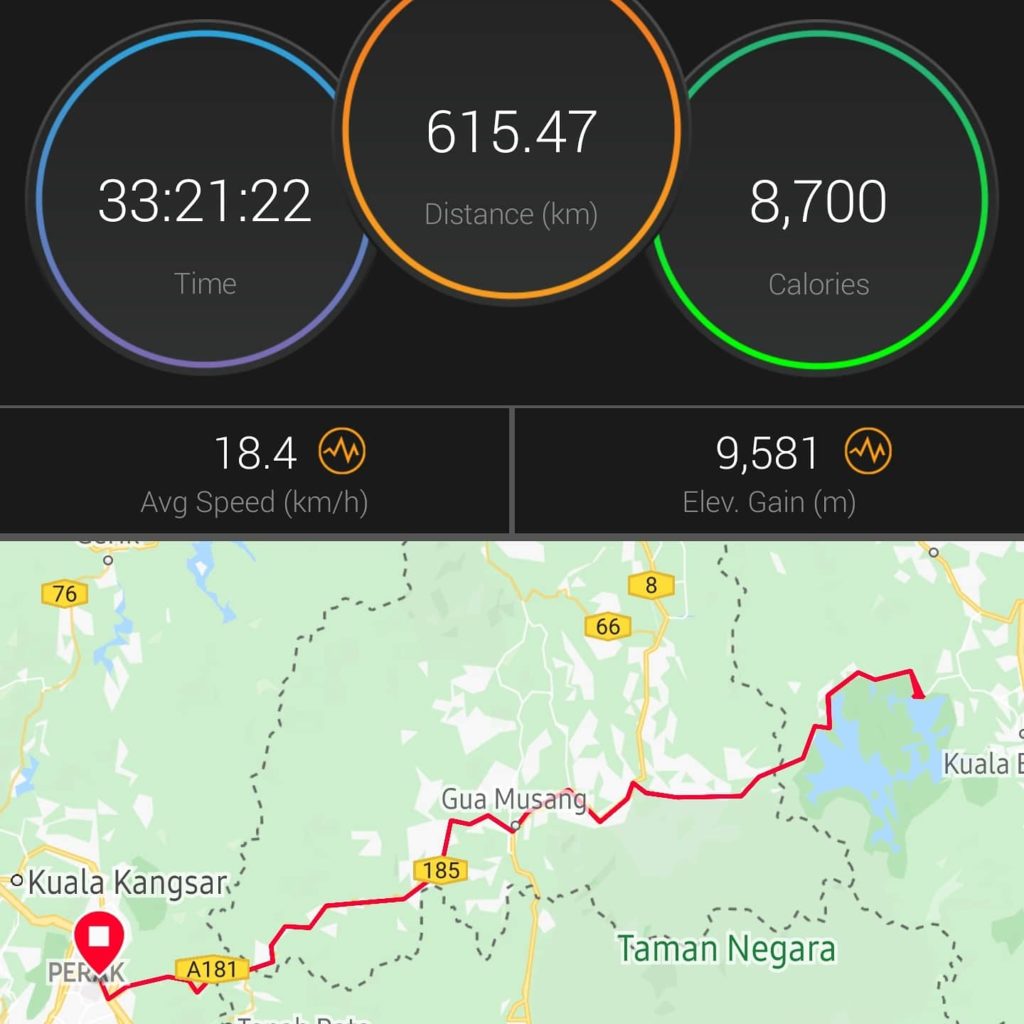
The very hot weather resulted in a lot more stops than necessary; riding in a group also often results in less-than-optimal stops and timing, especially when it comes to overnights and sleep stops, but depending on the route adds security and companionship along the way. There’s no right way to do rides such as this; solo or group, depends a lot on the route, planning, and sometimes luck. I never planned to ride as a group at the start, and it was happenstance and coincidental meetings along the ride that led to me, Chan and Maggie riding together for most of the ride.

Would I have completed earlier, or later, if I had done the entire route solo? Nobody knows, and now that the ride is over, that fact is completely irrelevant.
Looking back at the results, as always trimming time off the stops would be the best way to improve on finishing time. If this event had occurred under better conditions, some stops could have been eliminated, leaving only crucial stops at the checkpoints and a shorter stops in between. The punctures, both mine and Chan’s, certainly ate into the overall time significantly, but these things are unpredictable and therefore unavoidable.
As for equipment and gear choices, I think my bike has been setup well enough, though I might consider a slightly larger cassette at the back next time. One thing that completely blindsided me though, was the cold temperatures at the top of Cameron Highlands early in the morning. I would have packed some cold weather gear – at least some full-fingered gloves and leg warmers – had I known how cold it could get. This was really PBP-levels of cold and anyone wanting to train for PBP can easily go riding around Cameron Highlands after midnight until the wee early hours of the morning for a good experience.
Would I do another Super Randonnée in the future? Well now, that’s the trick question, isn’t it? If someone had asked me this right after finishing, I would quote Will Smith with an “ah hell naw” but who knows what can happen within the time span of a year? Perhaps an opportunity to improve my timing?
Only time will tell. Until then, there are more rides and more adventures to look forward to… and then hopefully more stories to tell.








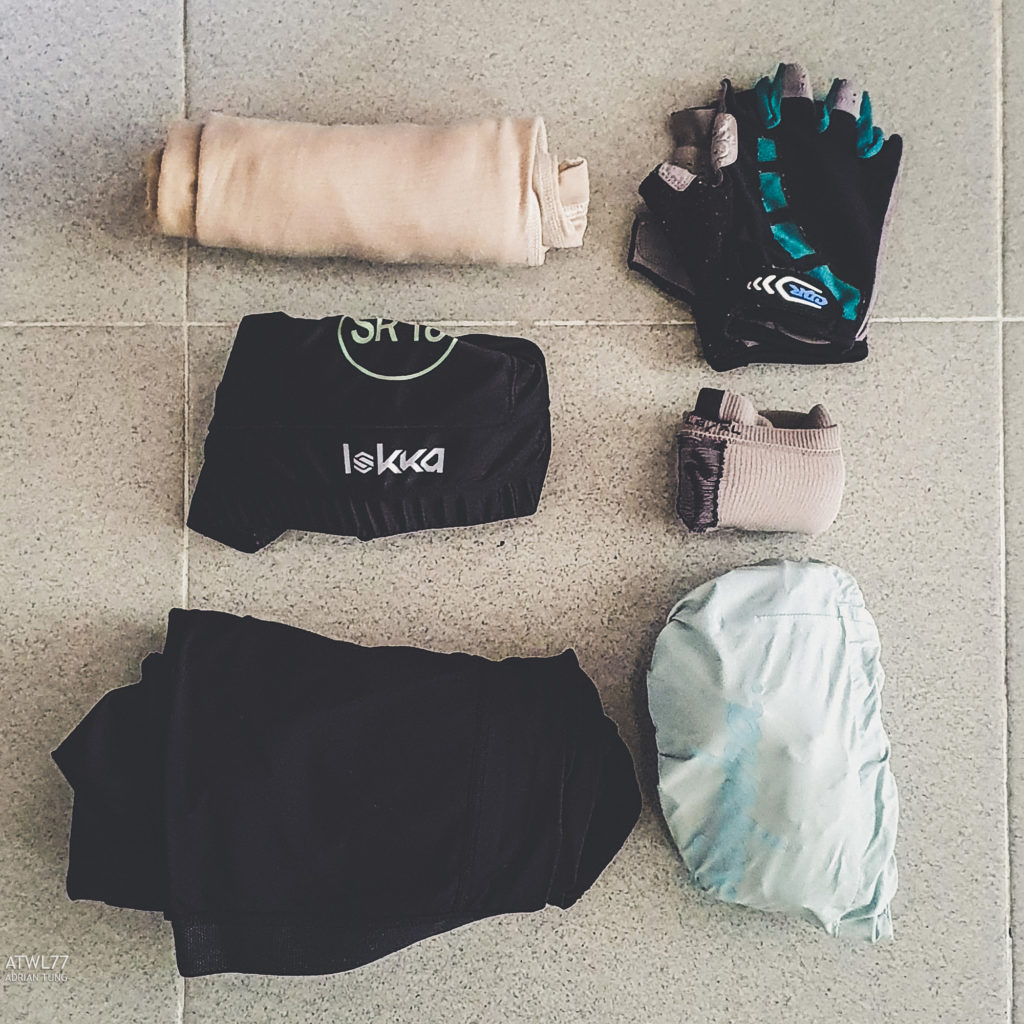

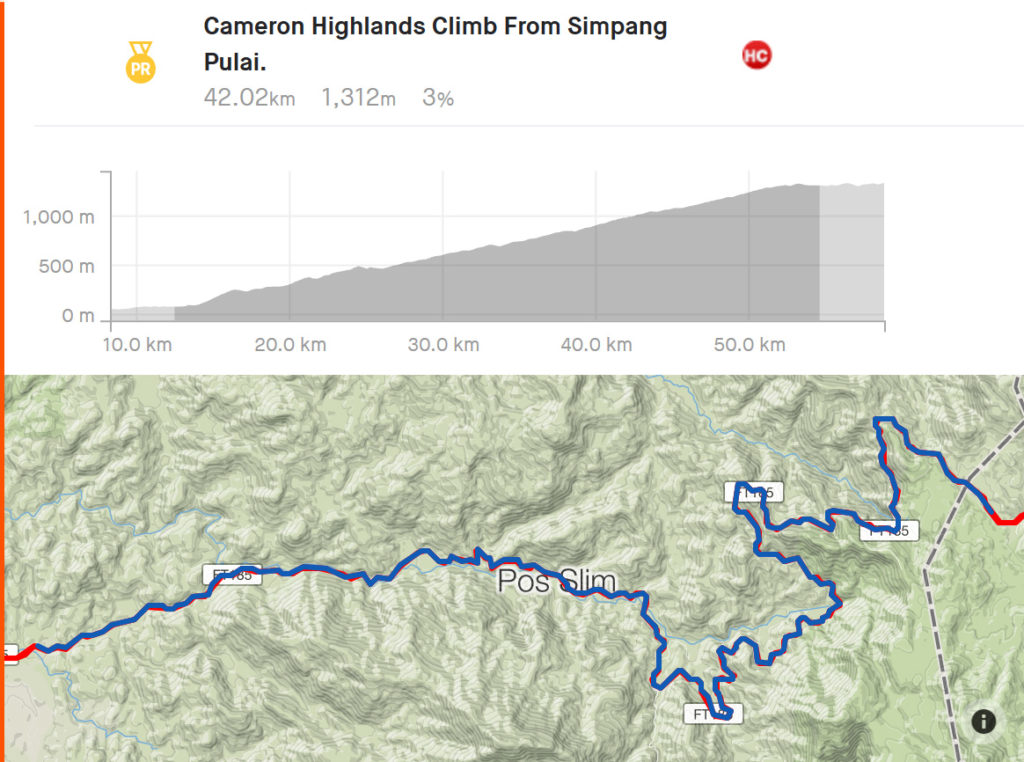
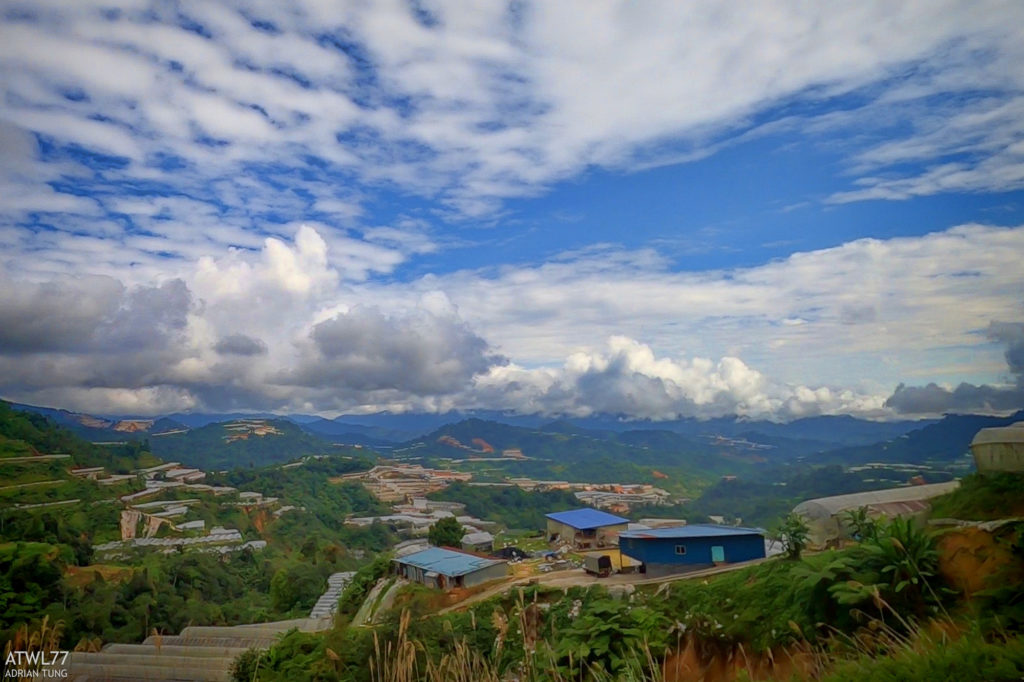




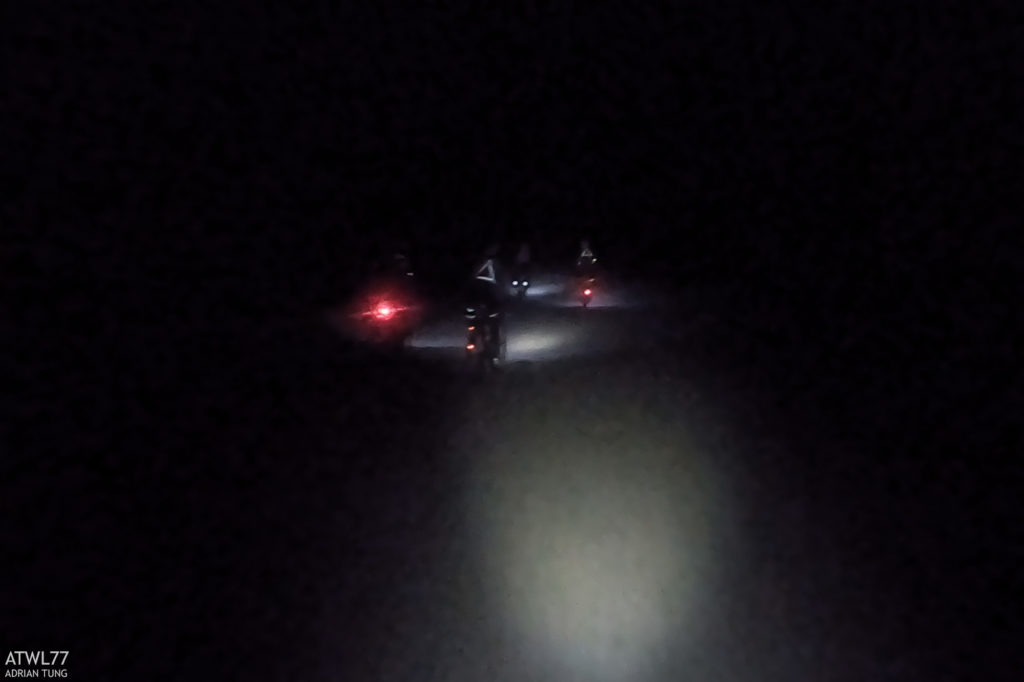



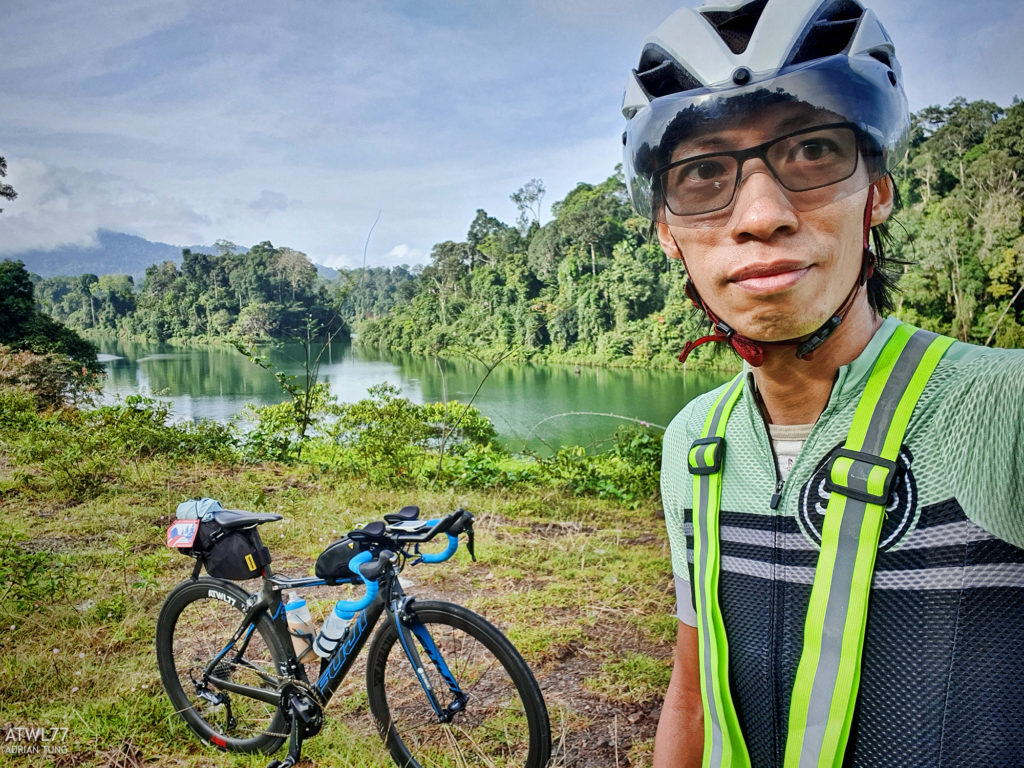



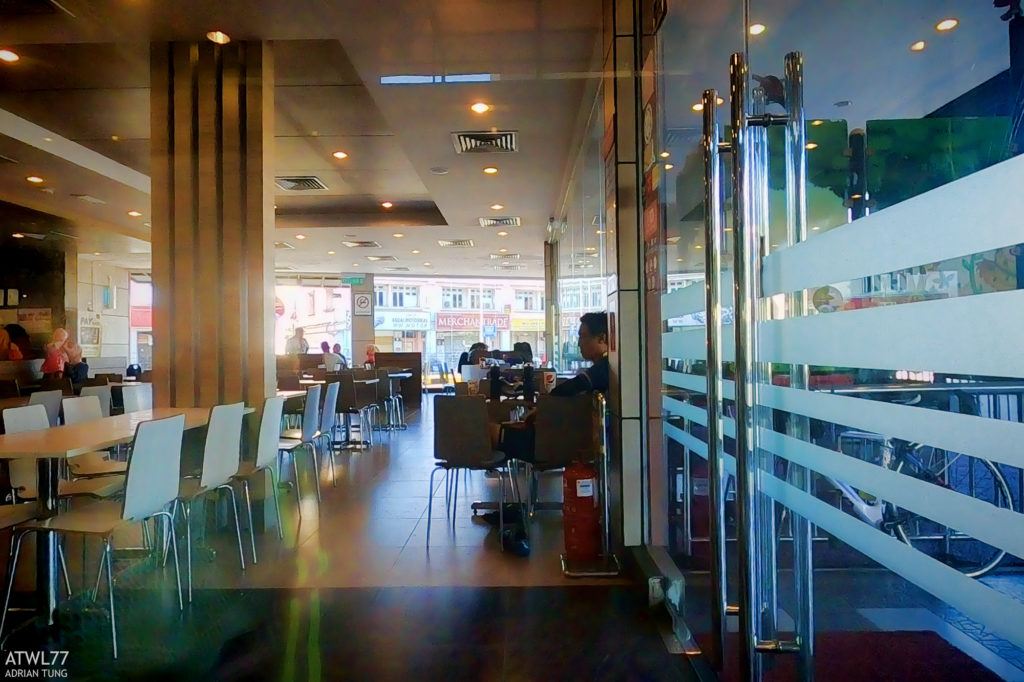

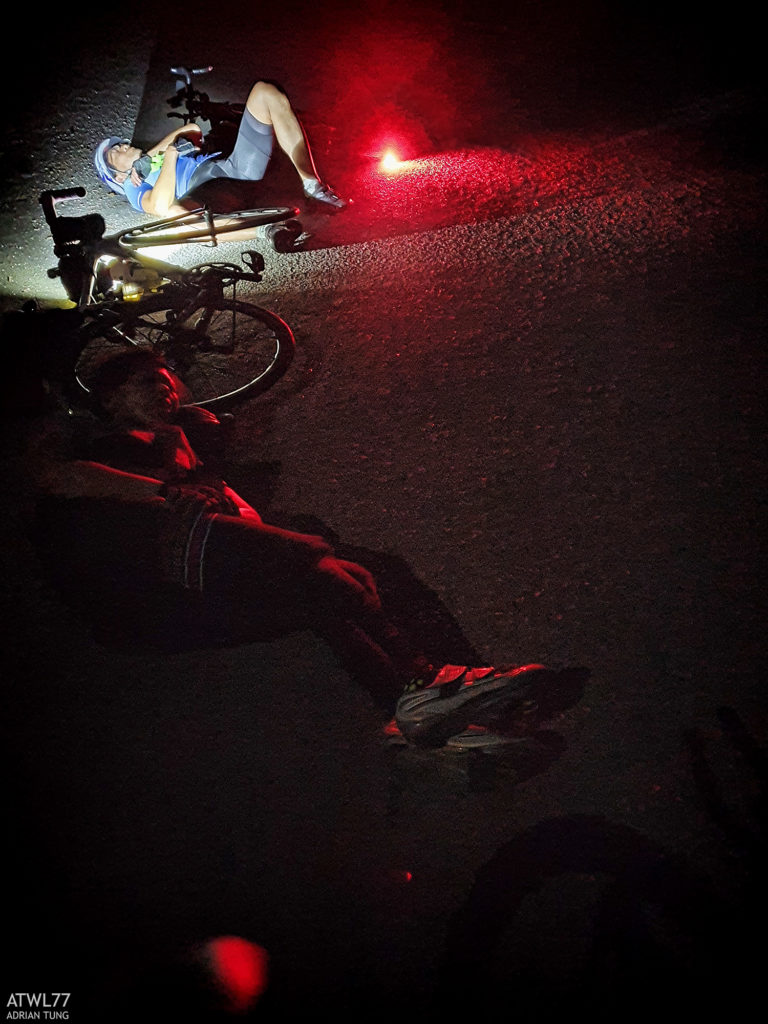
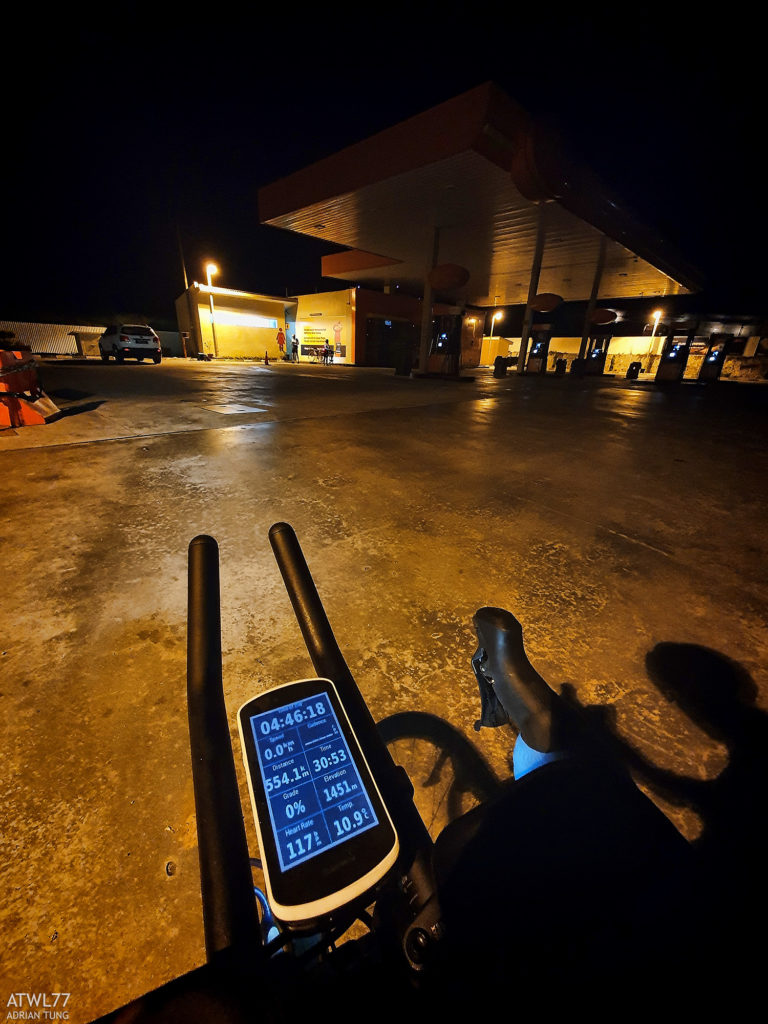
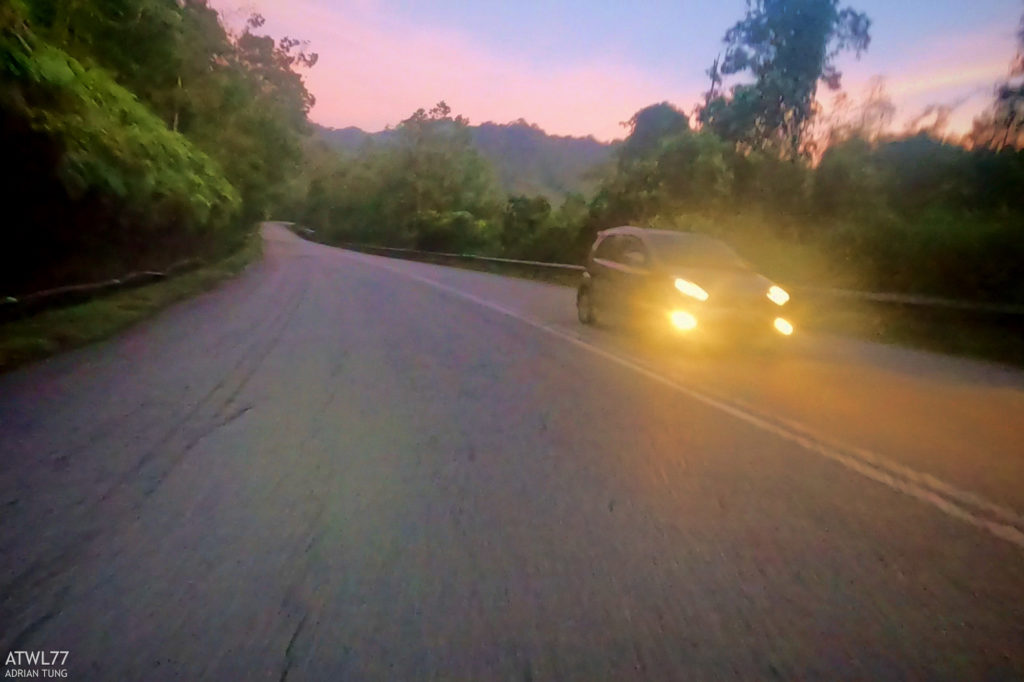

That’s a very meticulously documented and well-written journal about the tough Super Randonnée experience! Bravo!
Thank you for the efforts of making and sharing of long distance cycling journeys and related videos you had posted on YouTube. They are both informative and inspirational, especially for those who are eager to take on the challenges.
I had participated recent 2x BRM200 and 1x BRM300 (which you had made videos of) with my local cycling club and I don’t quite agree with the ride-fast & long-stop strategies of my group. Slower and steady pace with efficient short stops (withdrawing less time from the ‘bank’ analogy) should be implemented.
Maybe I should try solo in the upcoming BRM400 and BRM600 events and I am pretty sure I will see you around!
Allen K
A solo attempt is always a good way to test how independent you are and whether you are being held back by a group or not.
We can pick up a lot of tips from the ultra racers, and even they advocate being efficient with stops:
https://www.yellowjersey.co.uk/the-draft/darren-franks-im-not-much-of-a-dabbler/
The relevant quote from the above article would be: “My general strategy is to race the stops. To try and be quick at everything that isn’t on the bike. Your on-bike pace doesn’t change too much but what really makes the difference is everything you do off the bike.”